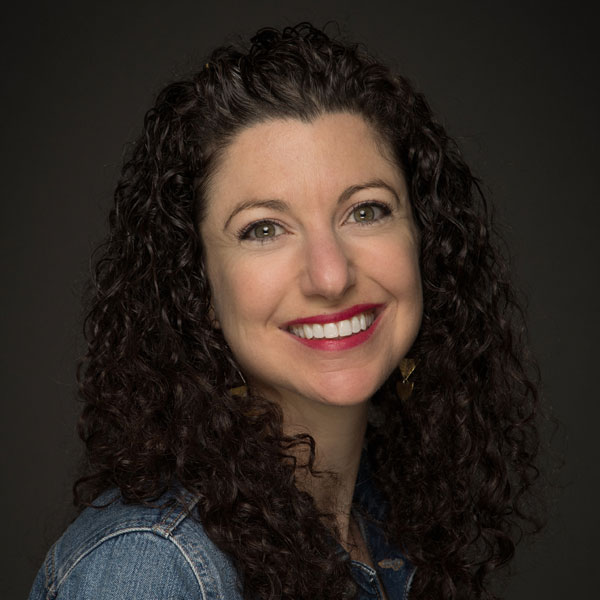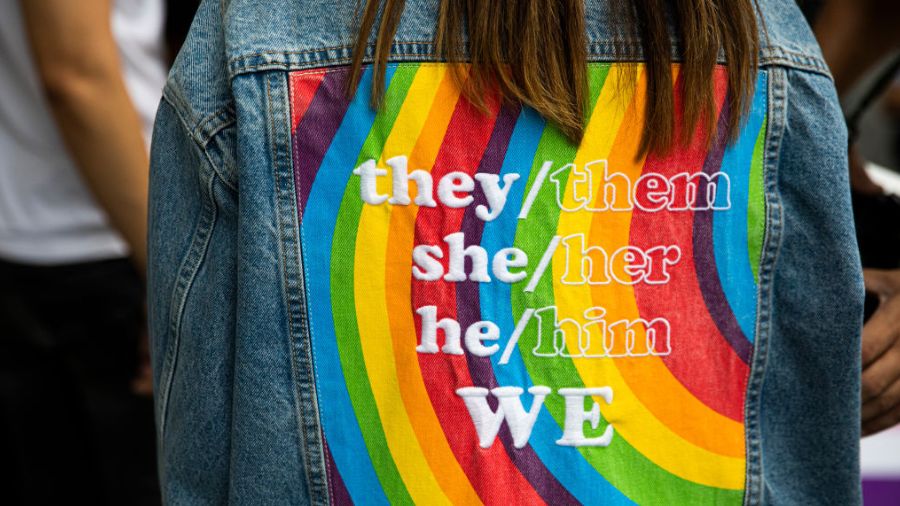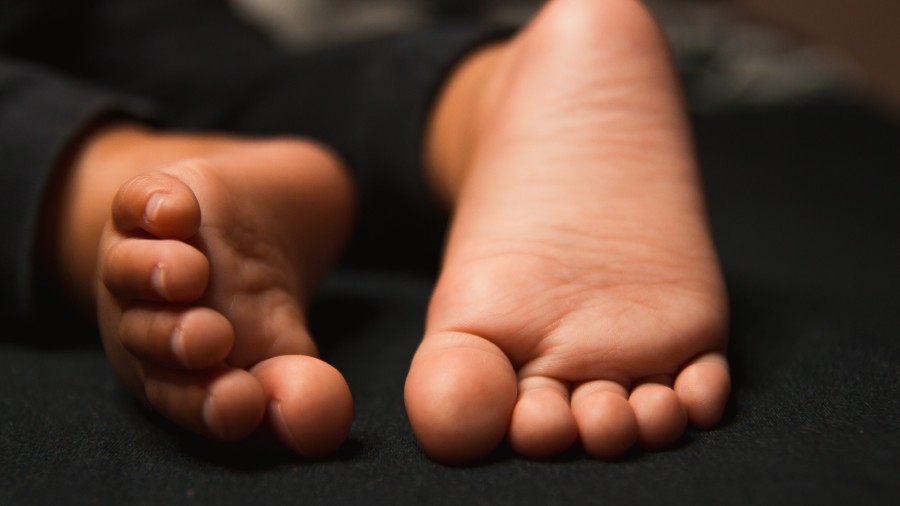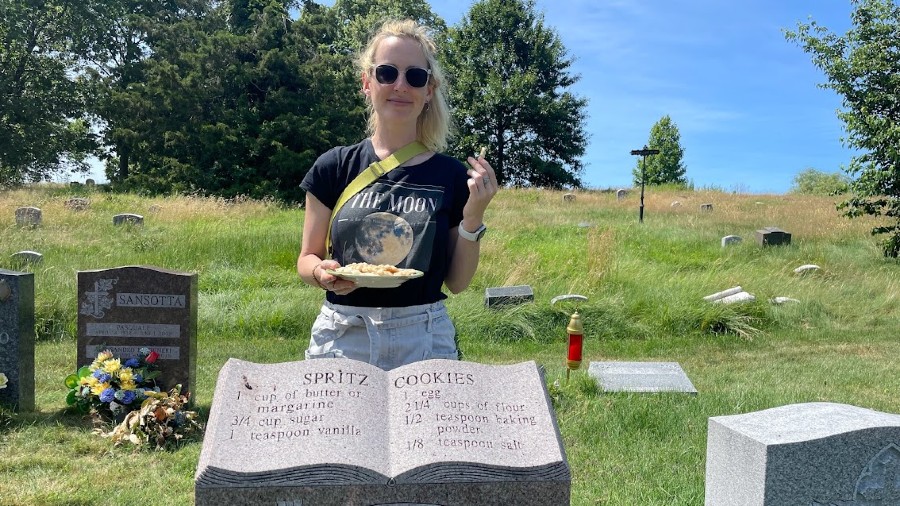Urban ArtWorks tries to rehabilitate marginalized youth through murals
Sep 5, 2019, 4:47 PM
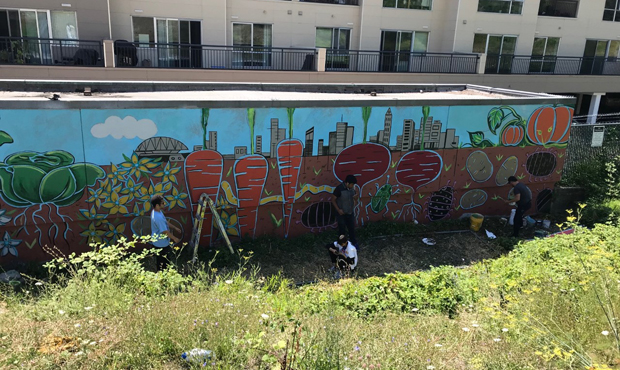
The latest Urban ArtWorks mural being painted this summer in Seattle's International District (Photo courtesy of Urban ArtWorks)
(Photo courtesy of Urban ArtWorks)
If you’ve taken the light rail through Seattle’s industrial SoDo neighborhood, you’ve probably seen the big, colorful murals on the backs of buildings whizzing by. Those were all done by marginalized young people guided by the Seattle nonprofit, Urban ArtWorks.
“The idea was to use young people who are part of the criminal justice system to help clean up the area and paint the murals, get employment skills and art skills and build a team,” said Urban ArtWorks executive director, Amanda Hashagen. “We have evolved since then — we still work with young people from the juvenile justice system, but also other youth who have been marginalized, or who have barriers to employment and education. We pair our youth with teaching artists and artists who paint hundreds of murals throughout Seattle.”
How a 15 minute school lunch still affects one Olympia man
Since Urban ArtWorks was established more than 20 years ago, their apprentices have painted around 1,500 murals. They offer four, nine week programs a year, and I met up with the summer session in Seattle’s International district, as they worked on painting a mural they designed behind a shopping center.
“It’s like a garden,” explained 15-year-old Tamiha Gix. “We’ve got the town on top of it. It’s carrots, cabbage, beets and potatoes; I think that’s a pumpkin on top.”
Gix was assigned to the program by her probation officer.
“It was something that happened in California that I got into. I was just there for accessory,” she said.
The apprentices are paid minimum wage for their work. Many have restitution to pay and for some, like Gix, this is their very first job.
“At first I didn’t think I was going to like it, but then we started painting and I started meeting new people so it’s alright,” Gix said. “I never used to paint or anything like that, so this is kind of new.”
On the surface, the program is focused on teaching its apprentices the art of painting murals. But the real goal is teaching them life and job skills. Gix admits that she has struggled with respecting people, but the program is helping her focus on interpersonal skills.
“They taught leadership, helping others,” she noted.
“They’re learning how to come to work on time or to call if they are going to be late, learning how to use proper language in the workplace,” said Hashagen. “In addition to that, they’re learning to negotiate and collaborate with each other as they decide what design they’re going to make. They have to come with an idea that they can all agree upon.”
Nineteen-year-old Lorenzo Anderson was standing in the hot sun in long pants and a sweatshirt with a hood over his head. He spoke so quietly I could hardly hear him.
“I got out of jail, I had a gun charge,” Anderson said. “My probation officer basically told me about this program.”
He says he didn’t think he was going to like it, but he enjoys doing something positive in the community.
The world is built for men and it’s literally killing women
“I’m trying to show my society that even though you have a felony you can change your life around and not always be the same person,” he described. “I’m always judged about the stuff I did as a kid, to this day people judge me. But I don’t let that affect me because at the end of the day I know what I did, but it’s time to move forward and build better.”
Hashagen says the beginning of a session is always rough. It takes time for the apprentices to come out of their shells, to trust the teaching artist, and to get over the fact that they don’t really want to be there.
But as the session moves on, attitudes improve and lessons are learned.
“This area where we’re at, it’s a high crime, drug area,” said Hashagen. “These buildings get tagged all the time which is why we were asked to come out here. So when the young people come and transform this building into something beautiful, the community, as you’ve seen, as we’ve stood here people have come by and said, ‘That’s great! I want to look at it!’ They’re seeing that our young people are the ones making that change. Hopefully they then see our young people as necessary contributors to a positive community instead of, ‘Oh, that’s a kid who’s on probation. He’s just making this place a mess.’ When these young folks start to see themselves being seen by the community members in that light, it just reinvigorates them to continue down that path, hopefully.”
The program is open to all 15 to 22-year-olds, and they’re always trying to reach new communities. They also need volunteers, teaching artists and take donations.

